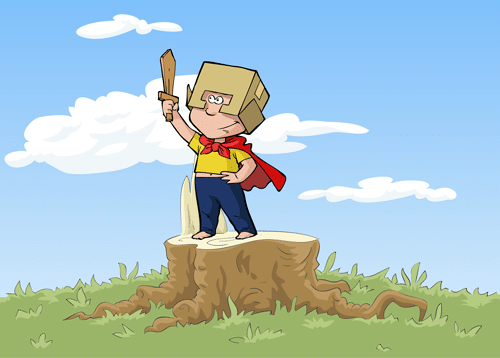
Sidekicks – Hindrance or Heroic Help?
The sidekick is a time-honored tradition in storytelling. They are often found as the lone companion to otherwise solitary heroes, or as tag-alongs looking to follow in the hero’s footsteps one day. They add a dash of flavor to a one-note main character, serve to offer a second perspective, or sometimes exist just to get in jams for the hero to get them out of. A sidekick can provide opportunities for dialogue when an otherwise taciturn hero would keep his thoughts to himself. The dialogue, either on screen or on paper, is usually far more interesting to read than page after page of brooding thoughts.
But not all sidekicks are created equal. The exist along a continuum, and each can have their own role to play.
The Pest
The pest is often worse than useless. They often spend much of their time either annoying the hero or getting underfoot. Sometimes an inept sidekick can be the catalyst for the action of the plot, just by how badly they botch things. This gives the hero something to do.
When creating a pest, have a heart. Usually the pest means well, and they should have some sort of endearing quality that keeps a reader from wishing them dead (well, that may or may not work, depending on your readers). A pest is normally going to be someone young an inexperienced: a new recruit, a wannabe hero, or – most commonly – a child. Just be aware that you tread a fine line with this type of character, because if you don’t make them likeable, your readers will lose patience with them (and wonder why your hero hasn’t, as well).
Example: The kids in Jurassic Park
The Tag-Along
While not being quite the liability that the Pest is, the tag-along isn’t much use to the hero. They may be a fan, a younger relative, or a would-be apprentice. Their greatest use is to the reader, because above all things, the tag-along is curious. They ask the questions the reader wishes they could, and stands in place of a lot of boring exposition. In this respect, they serve as a substitute narrator.
Optimism and boundless curiosity are common traits. You don’t have quite the worry about annoying the reader as with the pest, because of two factors. First, because the character is actually getting the hero to talk about all the things he would otherwise keep to himself. Second, because they tend to be naive, upbeat, and loyal, which really makes them hard to dislike.
Example: Huckleberry Finn
The Helper
At some point, a sidekick becomes more than a prop, and starts becoming a character in his or her own right. They may not be quite up to the task of being the hero, but they have a job and they manage to get it done. They are as likely to get the hero out of a jam as they are to get into one themselves.
This is a fairly large category of sidekicks. Most sidekicks exist to fill a blind spot in a hero’s repertoire. Rather than craft a hero who is good at everything, have them excel at a smaller subset of skills, and supply them with a sidekick who covers the deficiencies. Among the most interesting of this sort is the sidekick who acts as conscience. A protagonist may not be a hero in the moral sense, but has a friend or confidant who keeps their recklessness and thoughtlessness in check, guiding them along a path where their extraordinary skills can do the most good.
Example: Dr. Watson
The Lesser Light
Sometimes a hero is just not up to some great task, or maybe a truly great hero wants an apprentice, heir, or successor. The lesser light, in most senses, is a hero, but they hang around with someone who outshines them, so they take a lesser role. This is particularly common in comic books and epic fantasy. When you’re saving the world, sometimes the heroes just need to sort themselves out into a hierarchy, and perfectly serviceable heroes are left as support characters.
These sidekicks are capable of going off on their own and getting things done. They can have side plots where they venture off on their own, and they are prime candidates for spinoffs and derivative works.
Example: Robin (a.k.a. Nightwing)
Henchmen, Followers, Minions, and Lackeys
Villains can have sidekicks of a sort, too. Generally though, the term sidekick is just used or heroes/protagonists. The relationships for villains tend to be a bit more complicated, since the bonds of loyalty and friendship are generally at odds with what we consider a villain to be. They warrant their own entire discussion.

0 Comments